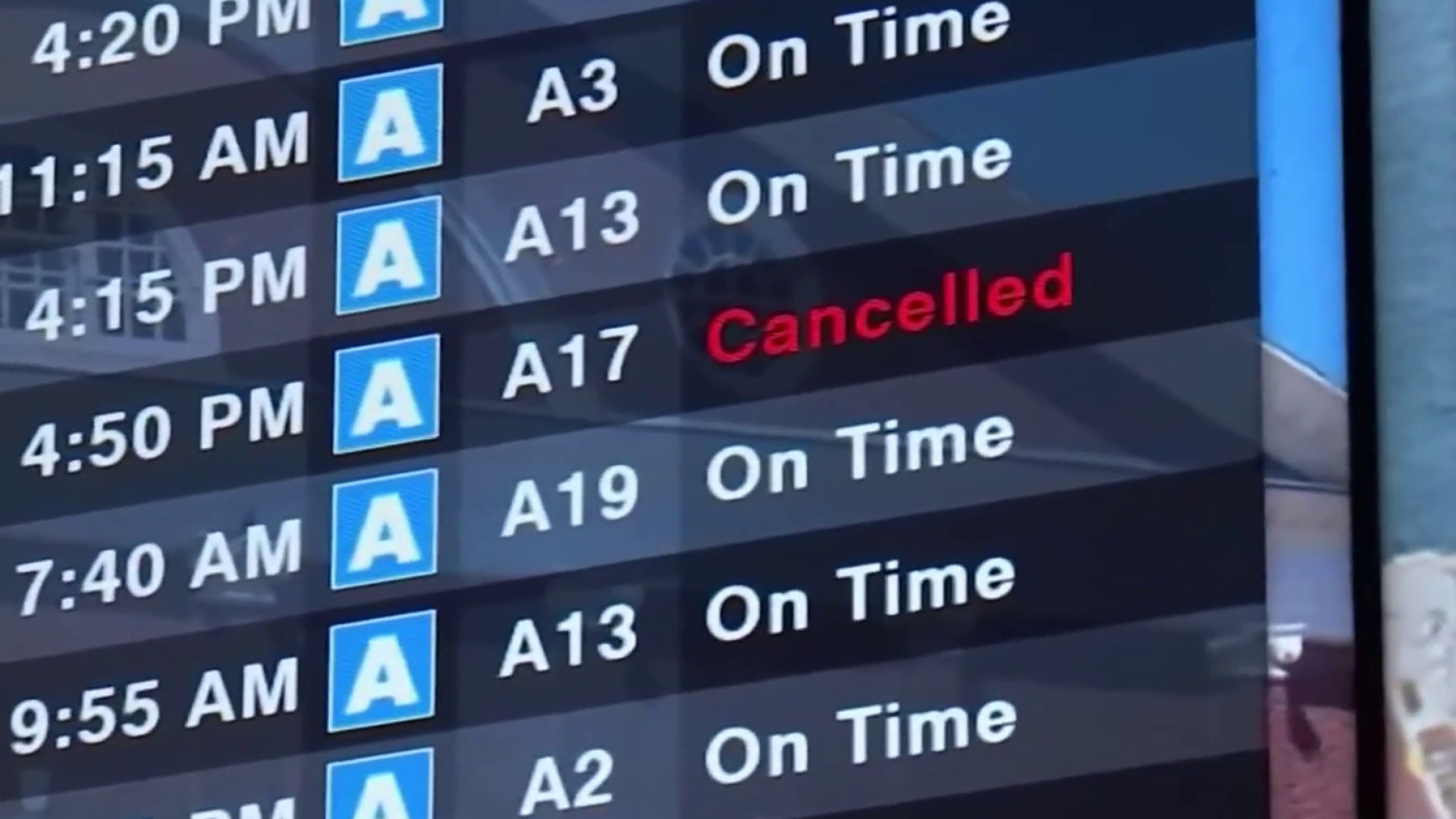After a five-month analysis of government documents, the NBC Bay Area Investigate Unit uncovered that in a six-year span 302 animals have died, been injured, or have disappeared in the care of commercial airlines.
Delta Airlines saw the most tragedies followed by Alaska Airlines, American Airlines, Continental Airlines, and United Airlines, according to Air Travel Reports published by the Department of Transportation.
How the animals got hurt or killed remains largely unknown.
For the most part, the data does not give a clear answer to why the pets died or were injured.
It’s also hard to get a full perspective.
By law, airlines only have to disclose if a pet is lost or dies during a trip, not the number of animals that have been transported.
The number of incidents has pet owners worried.

“Just treat my dog gently,” said a San Jose woman. She is shipping her dog Caleb, as cargo from the Bay Area to the state of Washington.
Local
“I am just praying that he will get there safely, it will all go smoothly,” she said.
The pet owner asked to remain anonymous. She allowed NBC to place a camera and a temperature recorder inside the kennel to document Calebs' journey.
Michael Jarboe of Miami said pet owners should be worried.

“He was my best friend,” described Jarboe of his 2- year-old Mastiff, Bam Bam.
Jarboe paid United Airlines $650 to have his beloved pet fly from Miami to San Francisco on August 28, 2012. He said he chose the airline because of its “PetSafe” program.
The program promises benefits such as “weather and proactive shipment monitoring” and more “PetSafe climate-controlled van than any other carrier.”
But Jarboe would later learn in a letter from United that animals aren’t always transported in climate-controlled vehicles.
"While our PetSafe program affords us air conditioned vans at our hub locations, there are times because of size of the animal and kennel, and availability, that when connections are less than four hours, we place the animals in a USDA Animal Welfare approved holding area,” the airline wrote.
“His ticket was twice mine, so the assumption is that they (animals) are getting some decent care,” Jarboe said.
According to him, during a layover in Houston, he saw his dog sitting on the tarmac on a luggage cart.
Jarboe claims Bam Bam spent almost four hours in conditions well above 85 degrees. When Jarboe arrived in San Francisco, he was told the dog didn’t make it. Read Bam Bam necropsy here (pdf).
The cause of death was acute cardiovascular collapse, according to a letter sent to Jarboe by United, which paid for the dog’s necropsy.
A United Airlines representative told The Investigate Unit, “We understand that the loss of a beloved pet is difficult and express our condolences to Mr. Jarboe for his loss. The safety of the animals we transport is always considered first and foremost when making decisions regarding their routing and carriage." Read letter here (pdf).
The United States Department of Agriculture is the regulatory agency that oversees the transport of animals on commercial airlines.
The USDA is investigating to see if United Airlines will receive any civil penalties in Bam Bam’s death. After pouring through hundreds of Live Animal Incident Reports, the Investigative Unit found government oversight varies.
According to a February 2012 report, a Delta Airlines clerk accidentally loaded two pets in a baggage bin with a container of dry ice. Both animals died.
The USDA investigated the incident but no action was taken against the airline.
Jarboe argues, “If we were in public and we left our dogs in the car in the heat of summer they would arrest us, and the airline can just get away with that.” He said United paid him $3,500 dollars for a new puppy, but said nothing will replace Bam Bam.
His advice to travelers thinking about putting their animal in cargo, “Don’t fly. Don’t fly.”
Jarboe’s claims came one week after former supermodel Maggie Rizer lost her 2-year- old golden retriever, Bea. Rizer has modeled for dozens of top designers from Gucci to Gap and currently lives in San Francisco. Her agent, Patty Sicular, told the Investigate Unit, Rizer is so devastated; she is unable to discuss her loss publicly. Read report on Maggie's dog here (pdf).

“The airlines are not being forced to take responsibility,” said Mary Beth Melchior. She founded “whereisjack.org” and launched a Facebook page to help a missing cat named Jack.
The page has nearly 25,000 followers. In August 2011, the feline went missing at Kennedy International Airport in New York after an American Airlines clerk dropped his kennel.
Two months later, Jack fell through the ceiling in the Terminal 8 customs area. The Norwegian forest cat was so ill that he had to be euthanized. Today the Department of Transportation still lists Jack as lost.
“The airlines don't treat your animal any differently than they treat any other luggage,” claims Melchior. However, it’s hard to know just how big of a risk it really is to ship an animal in cargo.
Airlines don’t have to publicly release how many pets are transported. By law, air carriers only have to disclose when a pet is hurt, lost, or dies during a trip.
Airlines for America, the only trade organization of the principal U.S. airlines, denied a request for an on-camera interview. Instead this statement was released: “The transportation of all passengers, including pets, to their destination safely and comfortably remains the airlines’ number-one priority, and airlines adhere to all federal regulations concerning the air transportation of animals. Because not all airlines accept pets for travel, owners should contact the carriers that do for their pet transportation policy."
“I think a lot of owners think that if I can be flown from point A to point B and nothing happens to me, then the same will be for my pet,” said Dr. Chris Cowing who is the President of the California Veterinary Medical Association.
He said that transporting an animal in cargo should be a pet owners’ last resort, especially if the animal is older and in poor health.
When asked if airlines should even be allowed to transports animals, Cowing responded, “I think we demand it and the airlines have to respond in kind. The owners have to be responsible to make sure the pets are healthy.”
And clearly not all trips end in tragedy. Caleb arrived safely from the Bay Area to the state of Washington. Cameras caught him mostly resting alongside his bone in his kennel and temperature graphs showed that he was kept in conditions ranging from 48 to 72 degrees.
MORE: Top 5 causes of incidents reported to Department of Transportation:
- Unknown
- Pre-existing medical condition
- Escaped from kennel
- Self-inflicted
- Natural death
[VIDEO] WEB EXTRA: Dr. Cowing's Pet Travel Advice



